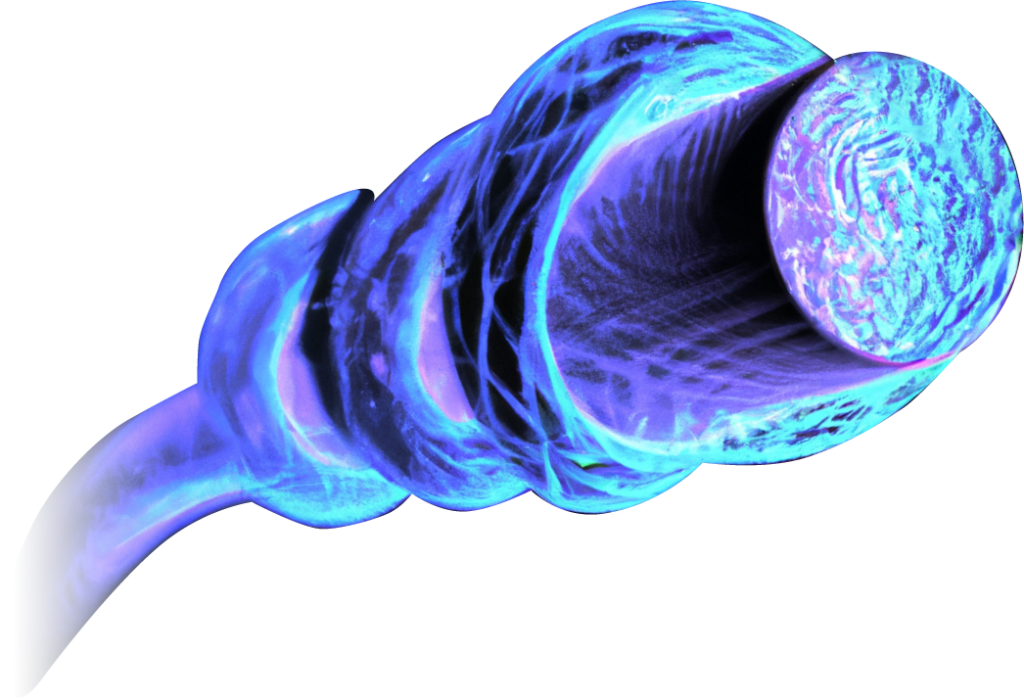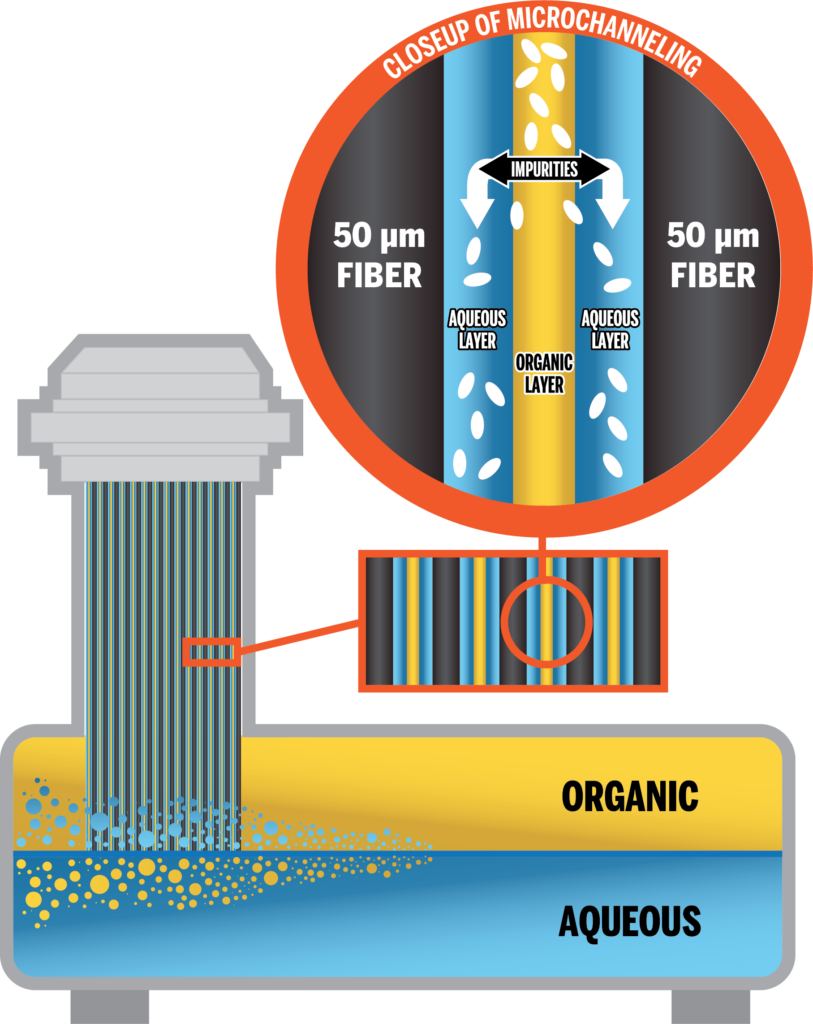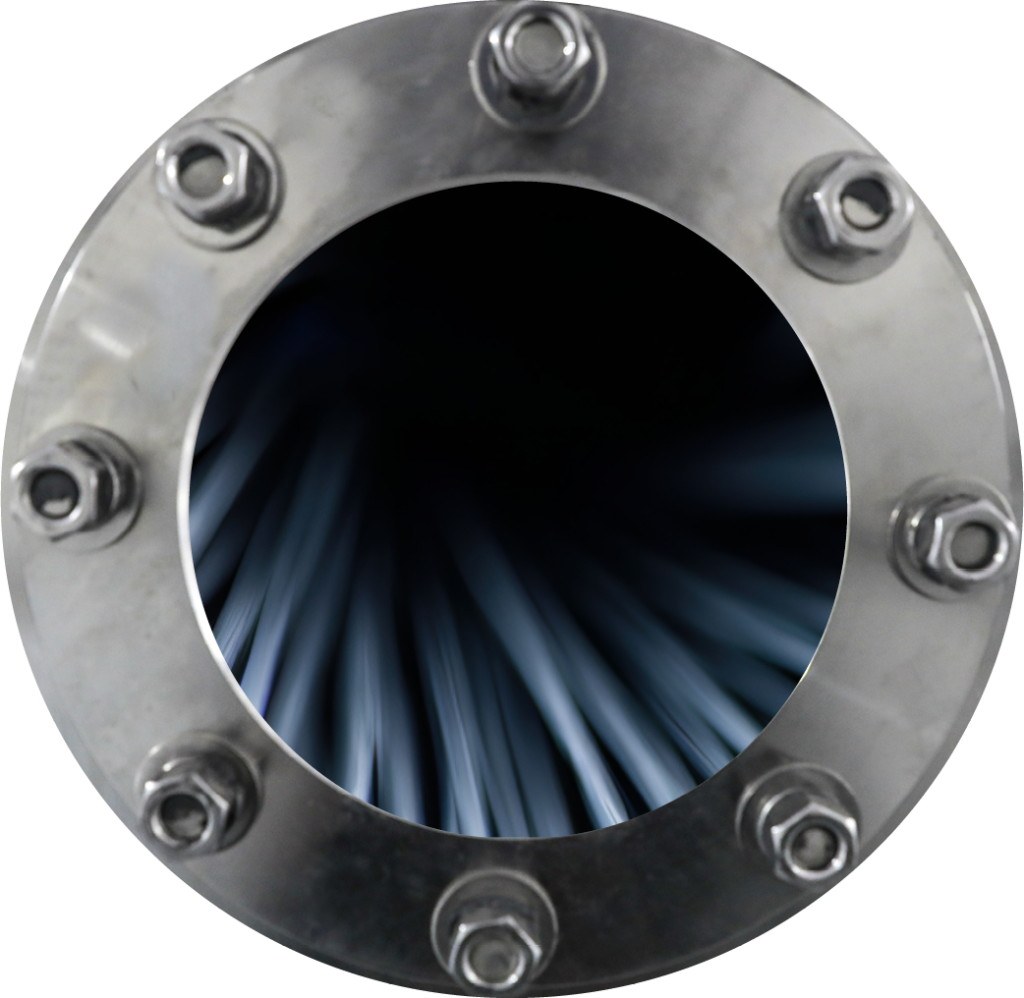
TRANSFORMING INDUSTRIES
Visionary Fiber Technologies, Inc. (VFT) commercializes its proprietary Fiber Reactor (FR) to address industrial processing challenges via massive microfluidic array technology with unprecedented throughput.
Adopters of VFT’s technology capitalize on process intensification benefits in a multitude of applications. The integration of generative design principles and continuous flow operations eliminate bottlenecks of traditional microfluidic methodology.
English
Massive Microfluidic Arrays
New techniques using massive microfluidic systems are being deployed by VFT to replace traditional cleanup processes. The FR microfluidic system creates repeating micrometer thick ribbons of oil and aqueous solvent. The physical constraints of the microfluidic reactor allow two immiscible materials to be in intimate contact as the liquids pass through the length of the reactor column.
The level of turbulence within the reactor can be precisely controlled, producing the desired mass transfer between phases, while avoiding the creation of intractable emulsions. This elaborate interface allows for the efficient diffusion of water-soluble materials from the oil into the aqueous phase.
The oil and aqueous phases separate without emulsion in a horizontal tank after leaving the microfluidic array. Purified oil is recovered at the top of the separator and the contaminant-laden aqueous phase is drawn out from the bottom.

- CONTINUOUS FLOW System
- NO Mechanical Agitation
- SHORT residence time
- LOW WIP
- FUNCTIONALIZABLE Fibers
- SMALL Footprint
INDUSTRIAL APPLICATIONS
BIOFUELS • EDIBLE INGREDIENTS • BIOLOGICS • RARE EARTH ELEMENTS
Reactive Extractions
Whether it involves recovery of aromatics used in flavors and fragrances, rare earths and metals needed for various catalysts, electronics and medical devices, or premium ingredients destined for biopharma and nutraceutical compounding, VFT can develop a process which achieves the intended goals in a cost-effective manner.
Biocatalysis
The high surface area achieved by massive microfluidic arrays can drive to equilibrium any chemical reaction that requires intimate contact between two immiscible liquids.
Liquid-Liquid Separations
VFT’s FR technology enables efficient stream processing to remove contaminants at a low operating expense.

Commercial Applications
VFT’s microfluidic FRs are currently deployed in multiple industries. Commercial biofuels systems commissioned at ethanol production facilities process 100% of the non-food grade oil produced at each location in a single stage microchannel reactor process. Distiller’s Corn Oil (DCO) is purified to meet Renewable Diesel (RD) and Sustainable Aviation Fuel (SAF) inbound feedstock quality requirements of < 3 ppm phosphorous and < 10 ppm total metals in one pass. The FR’s single pass rate compares favorably to inherently inefficient industry norms that require significant residence time and costly centrifugation.
VFT has also deployed neutralization systems to reduce Free Fatty Acids (FFA) in the edible oil industry without the use of centrifugation. The neutralization of vegetable oil with caustic typically creates stable emulsions that are difficult to separate without the use of a centrifuge. By modifying the fiber reactor to create low levels of turbulence, the microfluidic arrays efficiently neutralize and remove the saponified material without the creation of intractable emulsions that are typically made with continuous stirred-tank reactors. This efficient yet gentle processing enables near stoichiometric usage of caustic reducing undesirable side reactions from occurring while yielding low refining factors.
Each microfluidic array can be modified by the chemical bonding of various catalysts and biocatalysts at the fiber surface permitting continual re-usage of the catalyst and reducing OPEX. The first biocatalyst application VFT has endeavored to commercialize utilizes phospholipase enzyme for the processing of soybean oil (SBO).
The enzymatic breakdown of phospholipid impurities (gums) contained within crude SBO permits a further reduction of associated metal impurities over acid refining alone and an increase in oil yield liberated from the gums as a result of the enzymatic breakdown. In addition to phospholipase enzyme, VFT has successfully verified the functionality of several other enzymes immobilized within the Fiber Reactor.
English
Competitive Advantages
High Surface Area to Volume
50,000 m2/m3 vs 100 m2/m3 with Traditional Reactors
Rapid Mass Transfer
Short Diffusion Distance due to Microchanneling
Hydrodynamics
Laminar Flow, Droplet Flow, Secondary Flow
Scale-Up
Industrial-scale Throughput
Fiber Surface
Modulate Channel Surface

